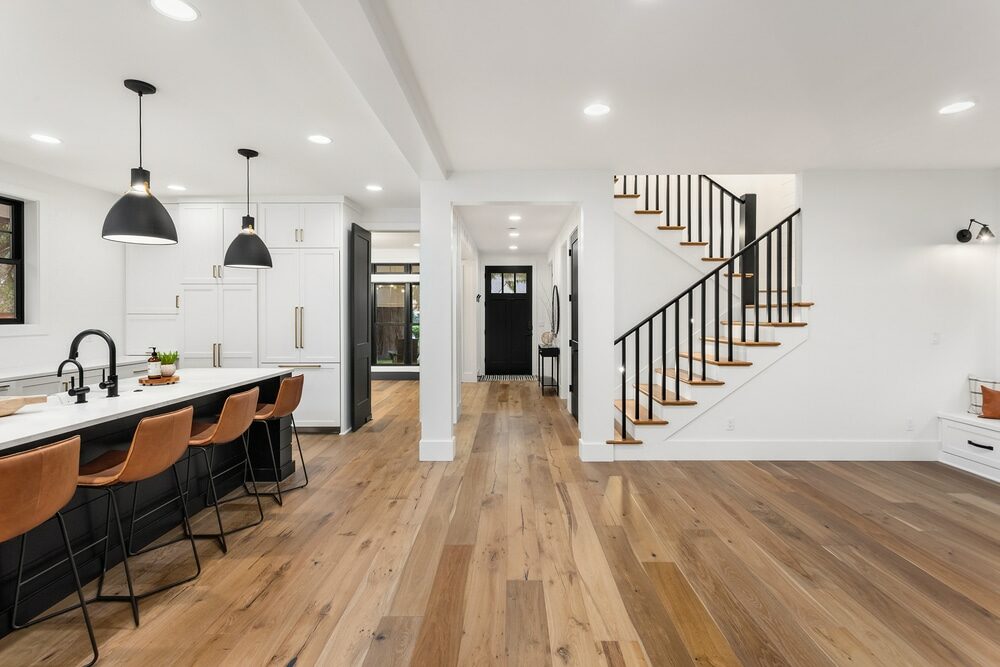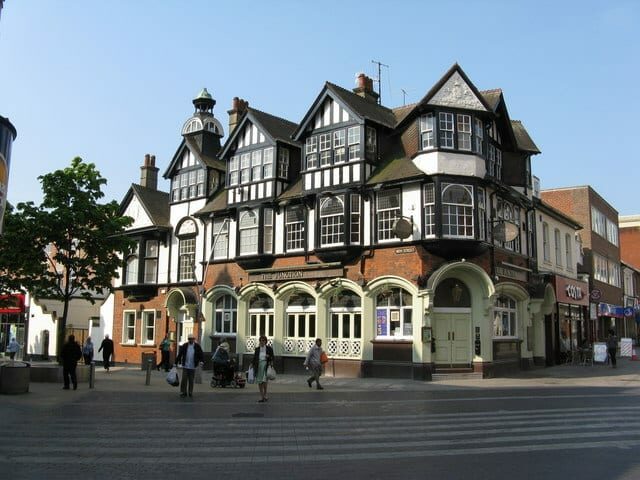London:
Nationwide:
The Art of Wood Floor Borders and Patterns
Posted on December 6, 2023
Wood Flooring
Mastering the Craft of Wood Floor Borders and Patterns: Elevating Your Interior Design
When it comes to interior design, the floor is often the unsung hero of a room, setting the tone and foundation for the entire space. The art of crafting wood floor borders and patterns is an exquisite way to transform ordinary floors into masterpieces of design and craftsmanship. In this blog post, we delve into the world of wood floor artistry, exploring the elegance, history, and creativity that these designs bring to homes and commercial spaces.
Historically, wood floor borders and patterns have been a symbol of sophistication and luxury. From the grand halls of ancient palaces to the refined homes of the modern era, these designs have evolved, reflecting the artistic trends and technological advancements of their times. Today, they are accessible to a wider audience, allowing more people to enjoy their beauty and charm.
We will guide you through the various types of wood floor borders and patterns, from classic to contemporary styles. You’ll learn about choosing the right wood, colour coordination, and design considerations that can dramatically alter the look and feel of a room. Whether you are a homeowner looking to renovate, a DIY enthusiast, or simply someone with an appreciation for fine craftsmanship, this journey through the art of wood floor borders and patterns promises to be both informative and inspiring.
Join us as we explore how these intricate designs can create a stunning visual impact and add an element of luxury to any space.
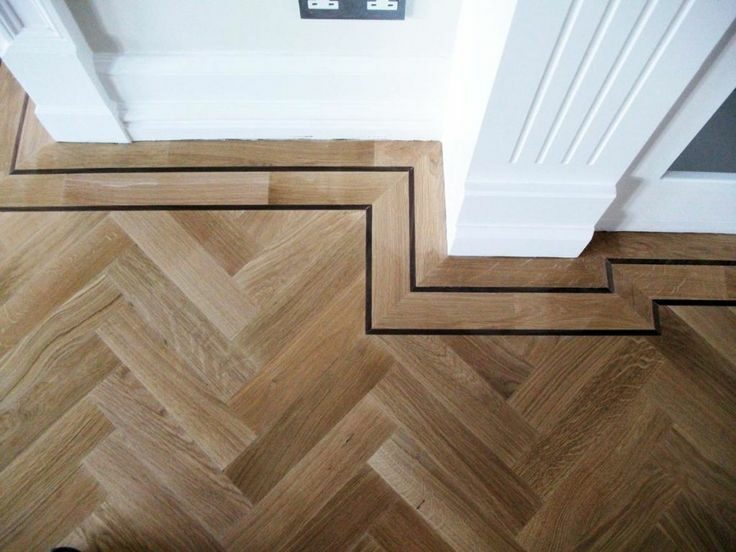
Types of Wood Floor Borders
Wood floor borders are more than just decorative elements; they are expressions of style and craftsmanship that frame and enhance the beauty of a room. There are several types of wood floor borders, each offering a unique aesthetic. Here’s an overview of the most popular types:
1. Classic Borders:
Timeless and elegant, classic borders often feature simple, straight lines or Greek key designs. They usually consist of one or two types of wood, providing a subtle but sophisticated frame to the flooring.
2. Geometric Borders:
These borders are characterised by their sharp angles and clean lines, forming patterns like squares, diamonds, and other shapes. Geometric borders can be simple or complex, depending on the design, and are great for adding a modern touch to any space.
3. Inlaid Borders:
Inlaid borders are intricate and detailed, often featuring multiple types of wood and intricate patterns. They can include floral motifs, vines, or other detailed imagery. These borders are akin to a work of art, each piece carefully crafted and laid to create a stunning visual effect.
4. Marquetry and Parquetry Borders:
Marquetry involves creating intricate designs with thin pieces of wood, while parquetry refers to geometric patterns. Both techniques can be used to create stunning, detailed borders that are true statements of craftsmanship.
5. Custom and artistic designs:
For those who want a truly unique look, custom-designed borders offer endless possibilities. From personalised motifs to bold, contemporary designs, custom borders allow homeowners to express their personal style and creativity.
6. Mixed Material Borders:
Incorporating materials like stone, metal, or glass with wood can create a distinctive and luxurious border. These types of borders are perfect for adding a touch of glamour and uniqueness to a space.
Each type of wood floor border can dramatically change the look and feel of a room, highlighting the beauty of the wood flooring while adding a layer of design sophistication. Choosing the right border depends on the overall aesthetic of the space, your personal style, and the ambiance you wish to create.

Exploring wood floor patterns
While borders frame a room, the patterns within can truly define its character. Wood floor patterns range from traditional to contemporary, each with its own unique appeal. Understanding these patterns can help you choose the perfect design for your space.
1. Herringbone and Chevron Patterns:
Herringbone and chevron are classic patterns that bring elegance and dynamic visual interest to the floor. Herringbone pieces are rectangular and arranged in a staggered zigzag pattern, while chevron patterns meet at perfect points, creating a continuous V shape.
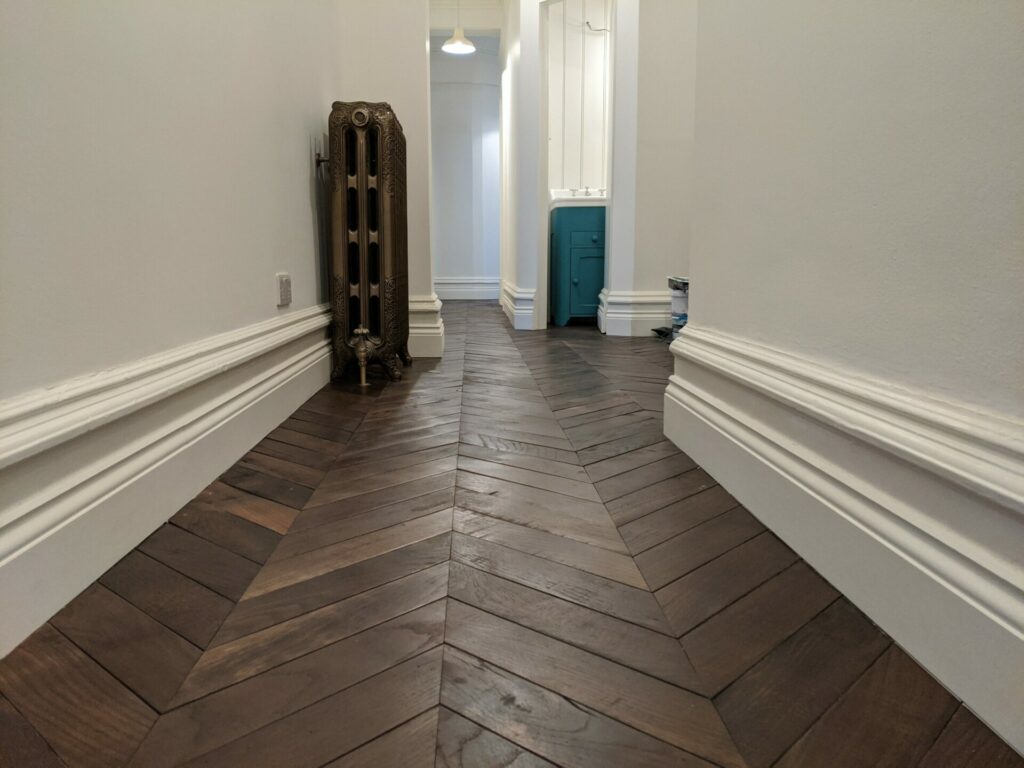
2. Parquet and Mosaic Patterns:
Parquet flooring is a mosaic of wood pieces, often featuring geometric designs. Traditional parquet includes simple squares and lozenges, while modern interpretations can be more intricate, creating a rich tapestry of wood underfoot.
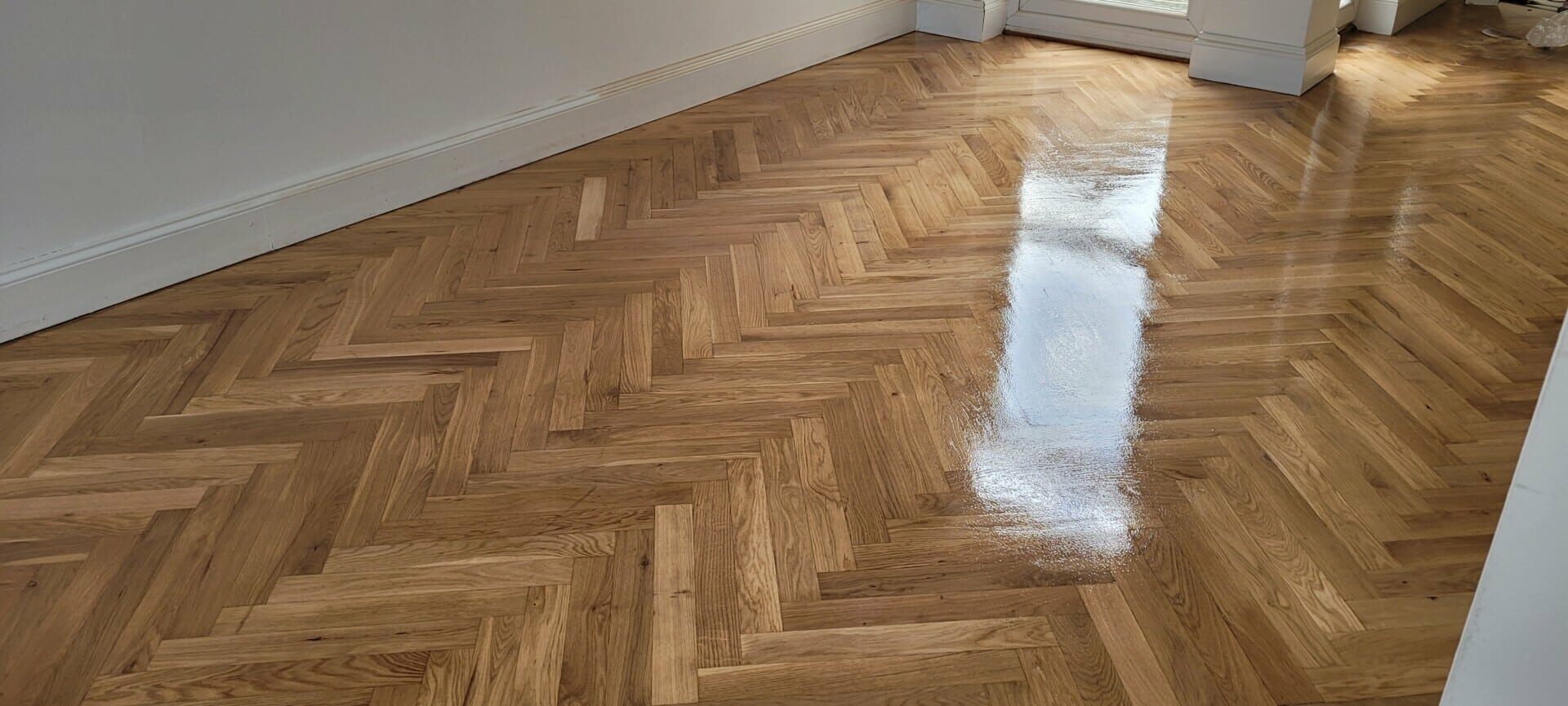
3. Basket Weave Pattern:
This charming pattern resembles a woven basket, creating a sense of warmth and homeliness. It can range from simple interlocking squares to more complex designs that mimic the intricacy of actual weaving.

4. Versailles Pattern:
Named after the famous Palace of Versailles, this pattern is a work of art in itself. It features a large square tile composed of intricate interlocking diagonals, surrounded by a border. The Versailles pattern exudes luxury and grandeur.
5. Board Width Variations:
Playing with board widths can create a subtle yet impactful pattern. Using a mix of different board widths can add texture and interest to a seemingly simple layout.
6. Random and Mixed Patterns:
For a truly unique floor, random and mixed patterns combine various elements from different styles. This approach can result in a one-of-a-kind floor that reflects personal style and creativity.
7. Medallions and Accents:
Incorporating wood medallions or accent pieces can create focal points in the flooring. These elements often feature intricate designs and can be used to add a touch of elegance to any room.
By exploring these wood floor patterns, you can choose a design that not only complements your home’s interior but also reflects your personal style. Whether seeking the understated elegance of simple geometric shapes or the grandeur of complex mosaics, wood floor patterns offer a wide range of options to enhance the beauty of your space.
Choosing the Right Wood and Colour
Selecting the right wood and colour for your floor is a critical decision that affects the overall look and feel of your space. The choice of wood species and colour not only dictates the aesthetic appeal but also the durability and maintenance requirements of your floors. Here’s how to make the best choice:
1. Understanding Wood Species:
Different wood species have unique characteristics, colours, and grain patterns. Hardwoods like oak, maple, and walnut are popular for their durability and timeless appeal. Exotic woods like mahogany or teak offer distinct colours and patterns but can be more expensive.
2. Colour Coordination:
Consider the existing colour palette of your room, including walls, furniture, and decor. Choose a wood colour that complements or contrasts nicely with your current decor. Lighter woods can make a room feel more spacious, while darker woods often add warmth and elegance.
3. Contrast with Borders and Patterns:
If you’re incorporating borders or patterns, consider using contrasting colours or shades to highlight these features. A dark border on light wood, or vice versa, can create a striking visual effect.
4. Think About Room Usage and Lighting:
The amount of natural light and the function of the room can influence your colour choice. Lighter woods can brighten up a dark room, while darker woods might be preferable in a brightly lit or high-traffic area.
5. Finishes and Stains:
Remember that the final finish and stain can significantly alter the appearance of the wood. Test different finishes on small wood samples to see how they affect the colour and grain.
6. Consider Long-Term Appeal:
While trends can be tempting, it’s important to choose a wood and colour that you’ll enjoy for years. Classic colours and woods often stand the test of time and are more likely to appeal to future buyers.
7. Eco-Friendly Options:
For environmentally conscious choices, look for sustainable wood or reclaimed wood options. These not only offer unique aesthetics but also ensure a smaller environmental footprint.
By carefully choosing the right wood and colour, you can ensure that your floor enhances the beauty and ambiance of your space while meeting your practical and aesthetic needs.
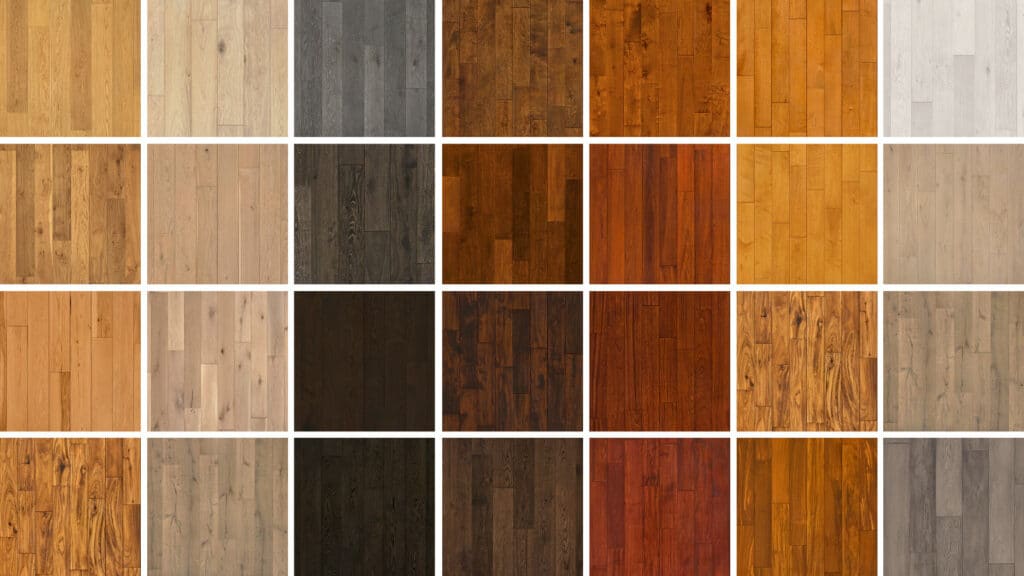
Design Planning and Considerations
Creating a beautiful wood floor with borders and patterns involves more than just selecting styles and colors. It requires thoughtful design planning and consideration of various factors that influence the final outcome. Here’s what to keep in mind during the design planning phase:
1. Room Size and Layout Impact:
The size and layout of the room can greatly influence the choice of pattern and border. Larger, open spaces can accommodate more intricate patterns without looking cluttered, whereas smaller rooms may benefit from simpler designs to avoid overwhelming the space.
2. Matching with Existing Décor:
Your new floor should harmonise with the existing décor and architectural style of your home. Consider the era and style of your home; a modern pattern might not suit a traditional setting, and vice versa.
3. Lighting and Visual Effects:
Natural and artificial lighting play a crucial role in how your floor looks. Light-coloured woods and certain patterns can brighten a room, while darker woods can create a more intimate atmosphere.
4. Focal Points and Directional Patterns:
Decide if you want the floor to be a focal point or to blend with the overall décor. Directional patterns, like diagonal or herringbone, can guide the eye and even make rooms appear larger.
5. Integration with Borders:
If you’re including borders, consider how they’ll integrate with the main flooring pattern. Borders can define areas, frame the room, or highlight architectural features.
6. Future Flexibility:
Think about how the floor design might affect future changes in décor. A neutral and versatile pattern can accommodate various styles and furniture changes over time.
7. Budget and Installation Considerations:
Your budget will influence your choices. Some wood species and intricate patterns are more expensive than others. Also, consider the installation costs, especially for complex patterns and borders.
8. Maintenance Requirements:
Some patterns and wood types might require more maintenance than others. Consider how much time and effort you’re willing to put into floor care.
By taking these design planning and considerations into account, you can ensure that your wood floor not only looks stunning but also fits well with your lifestyle, home’s architecture, and long-term design goals.
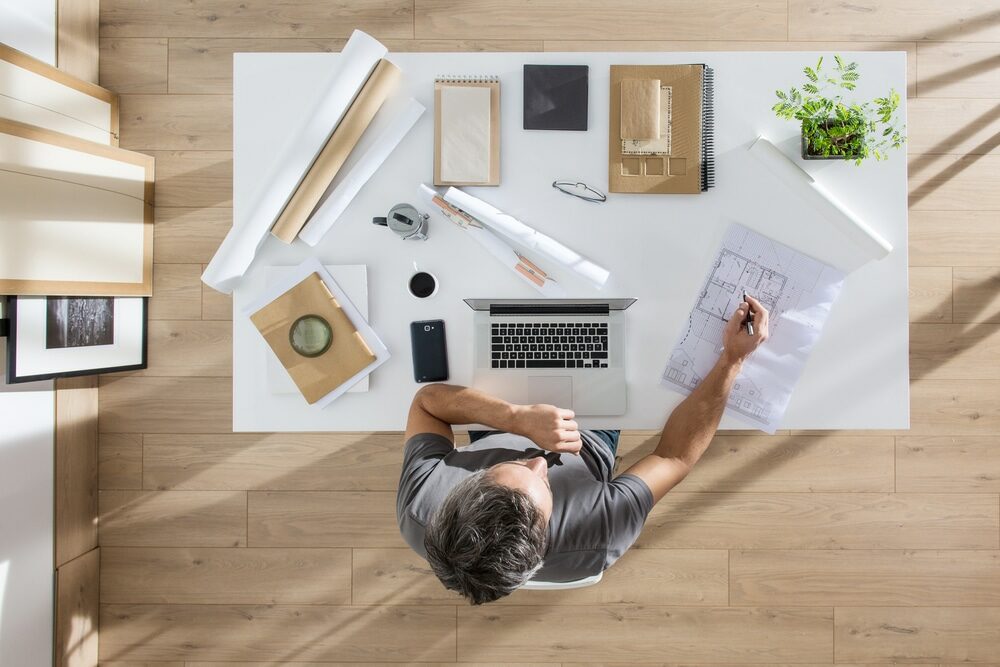
Installation Techniques
Proper installation is key to ensuring the longevity and beauty of your wood floor borders and patterns. Whether you are a DIY enthusiast or planning to hire a professional, understanding the installation process can be beneficial. Here’s an overview of the techniques involved:
1. Preparation and Tools Needed:
Before beginning the installation, ensure the subfloor is clean, level, and dry. Gather all necessary tools, including a saw, hammer, nails, adhesive, measuring tape, and a chalk line. A floor nailer and sander might also be required for larger projects.
2. Measuring and Layout:
Measure the room accurately and plan the layout of the borders and patterns. Use a chalk line to mark where the borders will go. This step is crucial for achieving a symmetrical and visually pleasing result.
3. Cutting and Fitting:
Cut the wood pieces according to your design. Precision is key, especially for intricate patterns or tight-fitting borders. Dry-fit the pieces on the floor to check the design before permanently affixing them.
4. Adhering and Nailing:
Depending on the type of wood and the subfloor, you may need to glue, nail, or both. Ensure each piece is securely attached, leaving no loose ends that could cause future problems.
5. Sanding and Finishing:
Once the floor is laid, sand it to create a smooth, level surface. Then apply a finish to protect the wood and enhance its natural beauty. Be sure to allow sufficient drying time between coats.
6. Tips for DIY Installation:
If you’re installing the floor yourself, take your time and don’t rush the process. Consider practicing on a small area or spare pieces to hone your skills before starting on the main floor.
7. Professional Installation:
For complex designs or if you’re not confident in your DIY skills, hiring a professional is advisable. They have the expertise and tools to ensure a high-quality finish.
8. Post-Installation Care:
After installation, take proper care of your floor to maintain its appearance. This includes regular cleaning and avoiding activities that could damage the wood.
By following these installation techniques and tips, you can ensure that your wood floor borders and patterns are not only aesthetically pleasing but also durable and long-lasting.
Maintenance and care
To ensure that your wood floor borders and patterns continue to look their best over time, proper Wood Floor Maintenance and care are essential. Wood floors are an investment, and with the right care, they can last for generations. Here are some key tips for maintaining your beautifully designed wood floors:
1. Regular Cleaning:
Sweep or vacuum regularly to remove dust and dirt. Use a soft-bristled broom or a vacuum with a hard floor attachment to avoid scratching the wood.
2. Mopping:
When mopping, use a slightly damp mop and a cleaner specifically designed for wood floors. Avoid using excessive water, as it can seep into seams and damage the wood.
3. Avoid Harsh Chemicals:
Harsh cleaners can strip the finish off your wood floors. Always use products recommended for wood floors and avoid bleach, ammonia, or abrasive cleaners.
4. Promptly Clean Spills:
Wipe up spills immediately to prevent water from penetrating and staining the wood. Use a soft, dry cloth to blot the spill.
5. Use protective pads under furniture:
Furniture can scratch and dent wood floors. Use protective pads under the legs of chairs, tables, and other heavy furniture.
6. Control Humidity Levels:
Wood floors can warp or crack in extreme humidity conditions. Try to maintain a consistent indoor humidity level, ideally between 30% and 50%.
7. Avoid Direct Sunlight:
Prolonged exposure to direct sunlight can fade wood floors. Use curtains or blinds to protect your floors during peak sunlight hours.
8. Refinishing and Repairs:
Over time, your floors may require refinishing to restore their shine and appearance. Small scratches and dents can often be repaired without refinishing the entire floor.
9. Area Rugs and Runners:
Use area rugs or runners in high-traffic areas to minimise wear. Make sure to clean underneath these rugs regularly and avoid rubber-backed rugs, as they can discolour the wood.
10. Professional Maintenance:
For major issues or deep cleaning, consider hiring a professional. They have the expertise and equipment to handle large-scale maintenance and complex repairs.
By following these Maintenance and care tips, you can protect your investment and enjoy the beauty and elegance of your wood floor borders and patterns for many years to come.
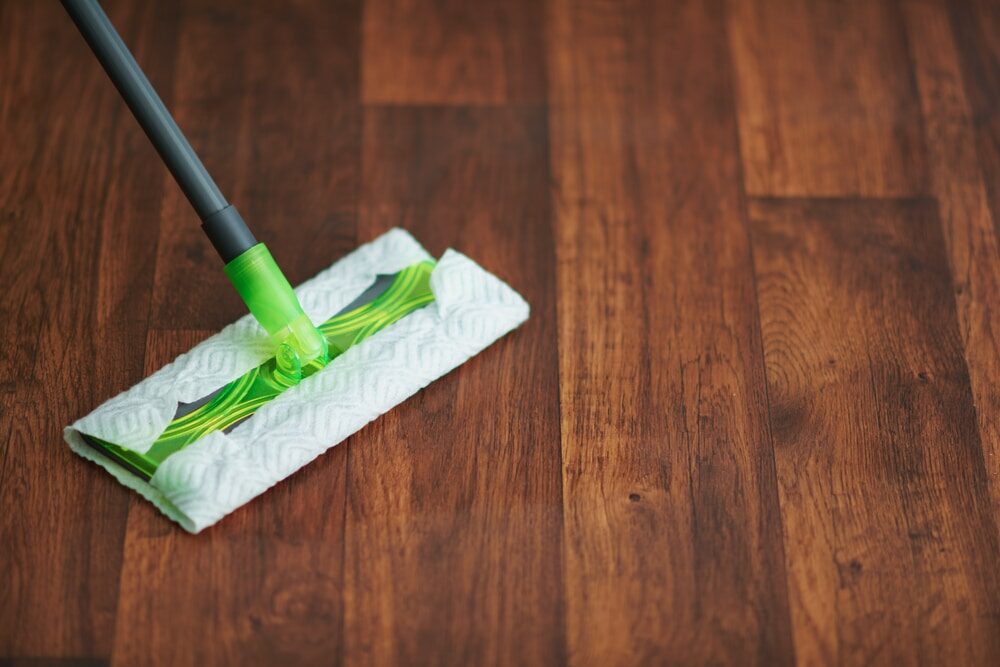
Creative Ideas and Trends
The world of wood flooring is constantly evolving, with new trends and creative ideas emerging regularly. Keeping up with these trends can provide inspiration for your own floor design, ensuring it is both contemporary and timeless. Here are some of the latest trends and creative ideas in wood floor borders and patterns:
1. Mixing Wood Shades and Species:
A current trend is mixing different shades and species of wood within a single floor design. This approach creates a unique, eye-catching look that adds depth and character to your space.
2. Geometric Patterns:
Geometric patterns are making a big comeback, especially in modern and contemporary interiors. Think beyond traditional designs and explore shapes like hexagons, triangles, or a mix of different geometric forms.
3. Wide Planks with Narrow Borders:
Using wide planks for the main floor area with narrow, subtle borders offers a modern twist on classic design. This style highlights the beauty of the wood while adding a refined edge to the floor.
4. Vintage and Reclaimed Wood:
Incorporating vintage or reclaimed wood adds a touch of history and sustainability to your flooring. Each piece tells a story, and the imperfections add to the charm and character.
5. Bold Colour Stains:
While natural wood tones are timeless, bold and unconventional colour stains are gaining popularity. Think shades of black, grey, or even whitewashed floors for a more avant-garde look.
6. Inlays and Medallions:
Adding inlays or medallions can transform a simple wood floor into a work of art. These can be custom-made to reflect personal tastes or to add a focal point in the room.
7. Eco-Friendly and Sustainable Options:
With growing environmental awareness, sustainable and eco-friendly flooring options are in demand. Bamboo, cork, and responsibly sourced hardwoods are popular choices.
8. Textured Finishes:
Textured finishes like hand-scraped, wire-brushed, or distressed wood are becoming more popular. These finishes add a tactile element to the flooring and are great for hiding scratches and dents.
By exploring these creative ideas and trends, you can find inspiration for a wood floor design that is not only stylish and contemporary but also a true reflection of your personal taste and lifestyle.
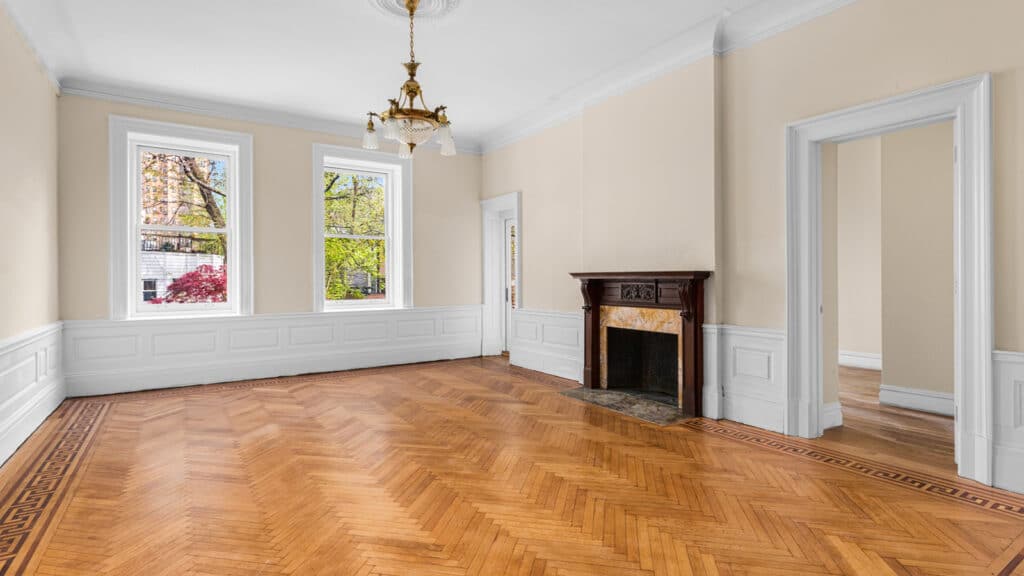
Conclusion
The world of wood floor borders and patterns is a rich tapestry of artistry and craftsmanship, blending tradition with modern innovation. As we’ve explored in this guide, the possibilities are virtually limitless, offering endless opportunities to make a unique statement in your home or business space. From the elegance of classic herringbone to the bespoke charm of custom inlays, wood floor designs can dramatically transform any room.
This journey through the art of wood floor design underscores the importance of thoughtful selection, from choosing the right wood and color to planning intricate patterns that reflect your personal style. The installation techniques and Wood Floor Maintenance tips provided aim to ensure that your beautiful floors stand the test of time, both in durability and style.
We hope this guide has inspired you to see wood floors not just as a functional aspect of your home, but as a canvas for expressing your individuality and enhancing the aesthetic appeal of your space. Whether you are renovating, building new, or just dreaming of future projects, the art of wood floor borders and patterns is an exciting realm of interior design worth exploring.
In conclusion, your choice of wood flooring is a reflection of your taste and a long-term investment in your property. With the right care and creativity, these floors can offer not just a foundation for your daily life but a lasting legacy of beauty and craftsmanship.

Sanding
We provide virtually dust-free sanding with our continuous belt machinery with mobile extraction units, giving you a safer environment for your family.
Oiling
This organic finish not only adds beauty to your home but also has exceptional water-repellent characteristics, making it easier to clean and maintain.
Waxing
This natural floor finish offers the softest and most mellow appearance – and leaves your floor able to breath.
Buffing
Using soft buffing machines (and hand-polishing where required) will bring a wonderful sheen to your newly-finished floor.
Repairs
We offer a full assessment of your wooden floors to determine what repairs are needed to provide the perfect working surface for the later stages of sanding, staining and sealing.
Restoration
We offer a comprehensive restoration process designed to address floors that are improperly fitted or damaged over time through wear and tear.
Request a fixed price quote for your wood floor restoration now
Simply enter your postcode below to get started.
Services
Wood Floor Sanding Wood Floor Restoration Wood Floor Scratch Repair Squeaky Wood Floor Repair Parquet Floor Sanding Parquet Floor Restoration Commercial Floor Sanding Church Floor Sanding Community Centre Floor Sanding School Floor Sanding Gap Filling Gap Filling with ResinCopyright © Mr Sander®
Privacy & Cookies Terms & Conditions Complaints Procedure Cancellation Rights Sitemap